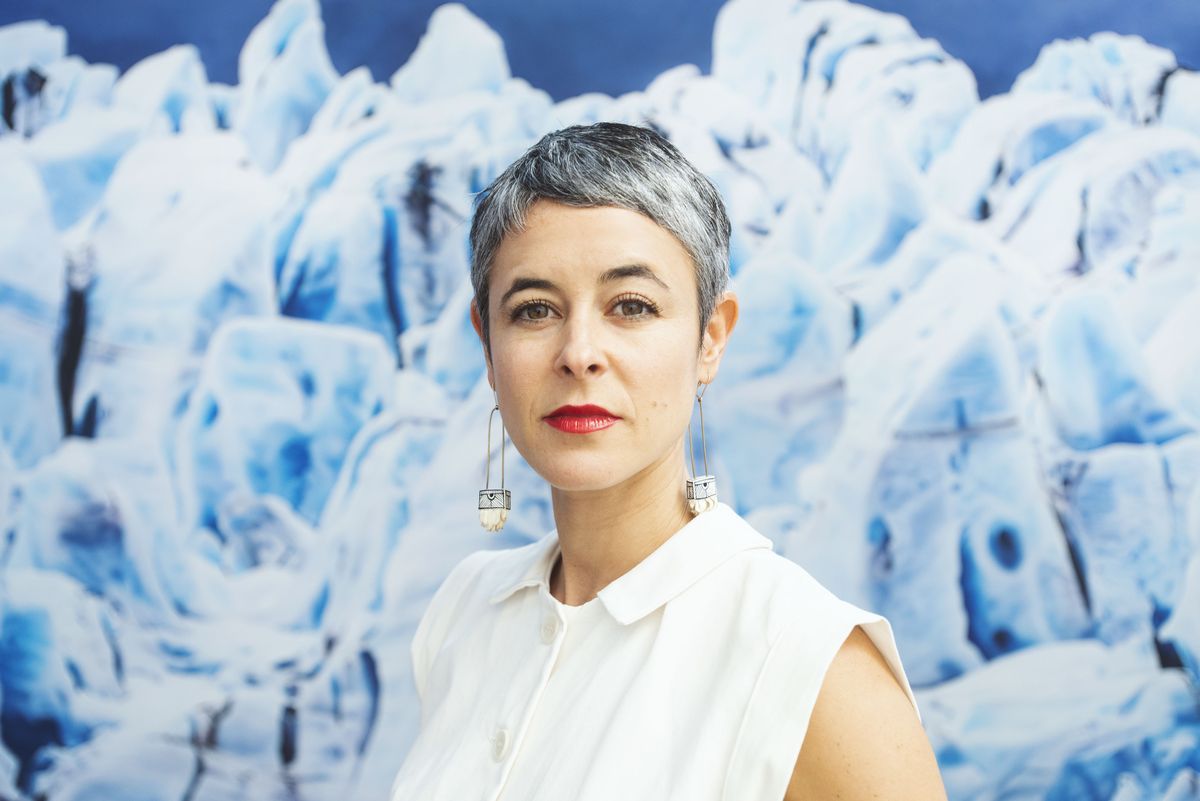Not only is Zaria Forman a photorealism visual artist but she is also a climate change activist who dedicated her life to educating the public. Forman’s large-scale hyperrealistic glaciers draw audiences in and instantly transport people to Antarctica.
Forman’s drawings and prints are a captivating and impressive portrayal of modern impressionism all the while being a form of environmental activism. She documents the melting of icecaps through her pastels to showcase the devastating effects of global warming.
Forman’s unwavering dedication to biodiversity and environmentalism is reflected in her drawings and photographs. Through this, her work encapsulates the importance of nature preservation and the global impacts of glacier loss while also raising awareness of a worldwide epidemic and promoting the United Nations Sustainable Development Goals of Climate Action and Life Below Water.
“Artists play a critical role in communicating climate change. I have dedicated my career to translating and illuminating scientists’ warnings and statistics through an accessible medium,” said Forman, in an interview with The Earth Issue.
In 2015, she travelled south to complete a four-week residency in Antarctica aboard a ship with National Geographic and Lindblad Expeditions. On this trip, Forman curated the first-of-its-kind polar art exhibition. She also flew with NASA on several Operation Ice bridge missions over Antarctica, Arctic Canada and Greenland.
“Drawing is my tool of progressive change,” said Foreman in The Earth Issue. “My artworks in tandem with NASA, together we send a unified message.”
Born in 1982, Forman often travelled with her family across the world. As a child, she was able to see barren, lush and rocky landscapes that sparked her interest in nature. “It ignited my appreciation for the beauty and vastness of the ever-changing sky and sea,” said Forman in Re: wild.
Forman’s mother was an artist and photographer who profoundly shaped her love for art and glaciers. While on these trips with her family, her mother would take photographs of icy landscapes. “She taught me the importance of loving what you do and carrying out projects full force, no matter the obstacles in the way,” said Forman in The Earth Issue.
In 2005 Forman graduated with a studio arts degree from Skidmore College, NY. A year prior to that she spent a summer in Florence, Italy studying art, language and design. In 2004, Forman’s career took off with her first series Cloud Study, which was influenced by the artwork of landscape artist Robert Longo.
Although Forman was a lover of landscapes and nature, she was not fully aware of the impacts of global warming until years later. “People weren’t talking about it and it wasn’t in the news all the time like it is now,” she said in an interview with Re: wild.
It was not until 2007 that Forman understood the impacts of global warming. On a family trip to Greenland, she saw firsthand the impacts of climate change. Concerned by the melting of the ice caps, Forman turned her concerns into art activism.
Forman’s rich and detailed compositions are created with soft pastels and the help of her fingertips. Forman’s technique of blending pastels with her hands provides more control over colours all the while maintaining intimacy with the art.
Forman slowly builds up the pastel pigment with precision until she is happy with the result. An eraser is rarely used to remove her mistakes. It is a part of Forman’s process for things not to be perfect, for nature is not perfect.
Forman’s art is created from memory and with the help of photographs or sketches. “Nature feeds my creative process and it’s where all of my drawings begin,” she said. in Re: wild.
“When I travel, I take thousands of photographs. I often make a few small sketches on-site to get a feel for the landscape.”
Not only does Forman draw icebergs, but she also draws the ocean. The detailed images of splashing and crashing water against the sand are a stark contrast to the icy and cool appearance of the frozen glaciers.

While the icebergs are stoic and solid, the sea appears to be wild and untamed. This is a subtle yet haunting reminder to audiences; when ice caps melt, sea levels rise. These towering works of art gesture that the earth is at risk.
Forman also takes landscape portraits. Her photographs vary from close-ups of icy glaciers to animals that are indigenous to the land.
Her photography is an introspective look into the calm temperament of nature. These glassy and icebound snapshots are inviting audiences in to take a closer look at the beauty that is being destroyed.
The composition of each photograph varies, changing the dynamics of what is being seen by viewers. In one photograph the audience is up close and personal with the head of an iceberg that appears it could fall at any moment. In another, Forman takes us to the soft pillowy terrain of the Arctic where one is surrounded by penguins.
Although, Forman’s artistic statement is one of love and not fear. It is her goal to show audiences the beautiful parts of the world they will miss if things do not change.
Forman’s artwork has appeared in publications such as The New York Times, National Geographic, The Smithsonian Magazine and The Wall Street Journal. Forman’s next solo exhibit will be held at the Winston Wächter Fine Art, New York in Nov. More about her next exhibit can be found on Forman’s Instagram.
